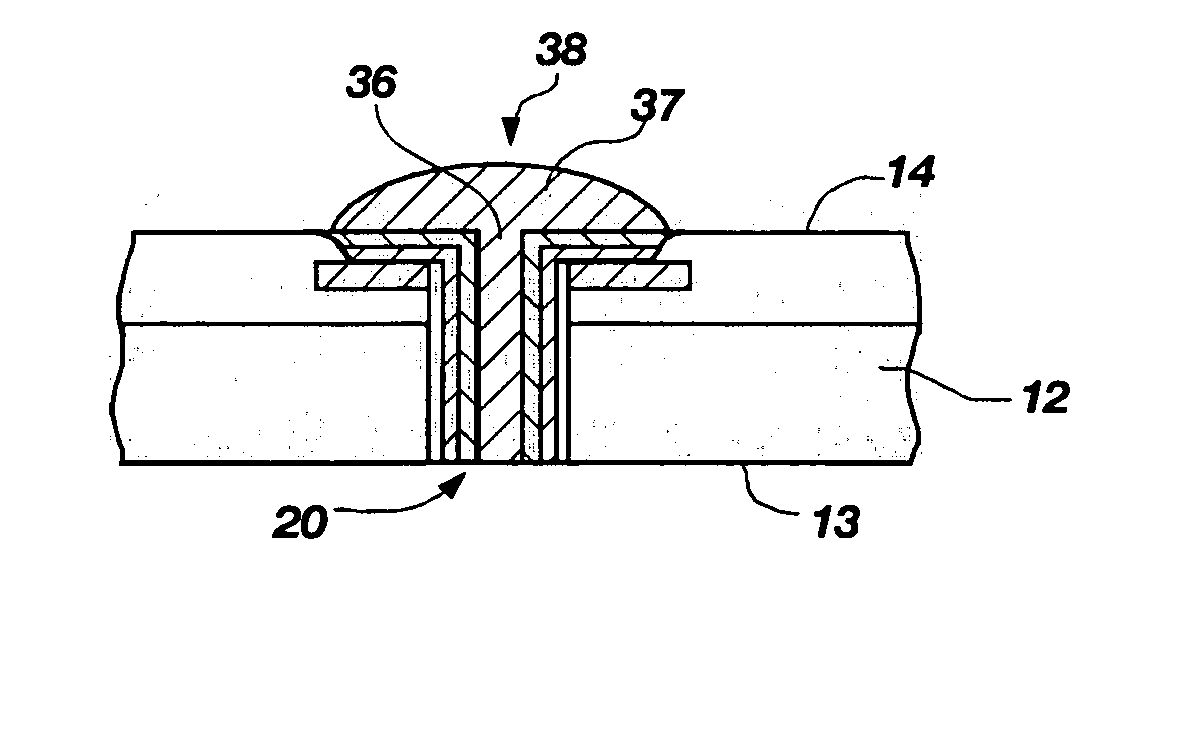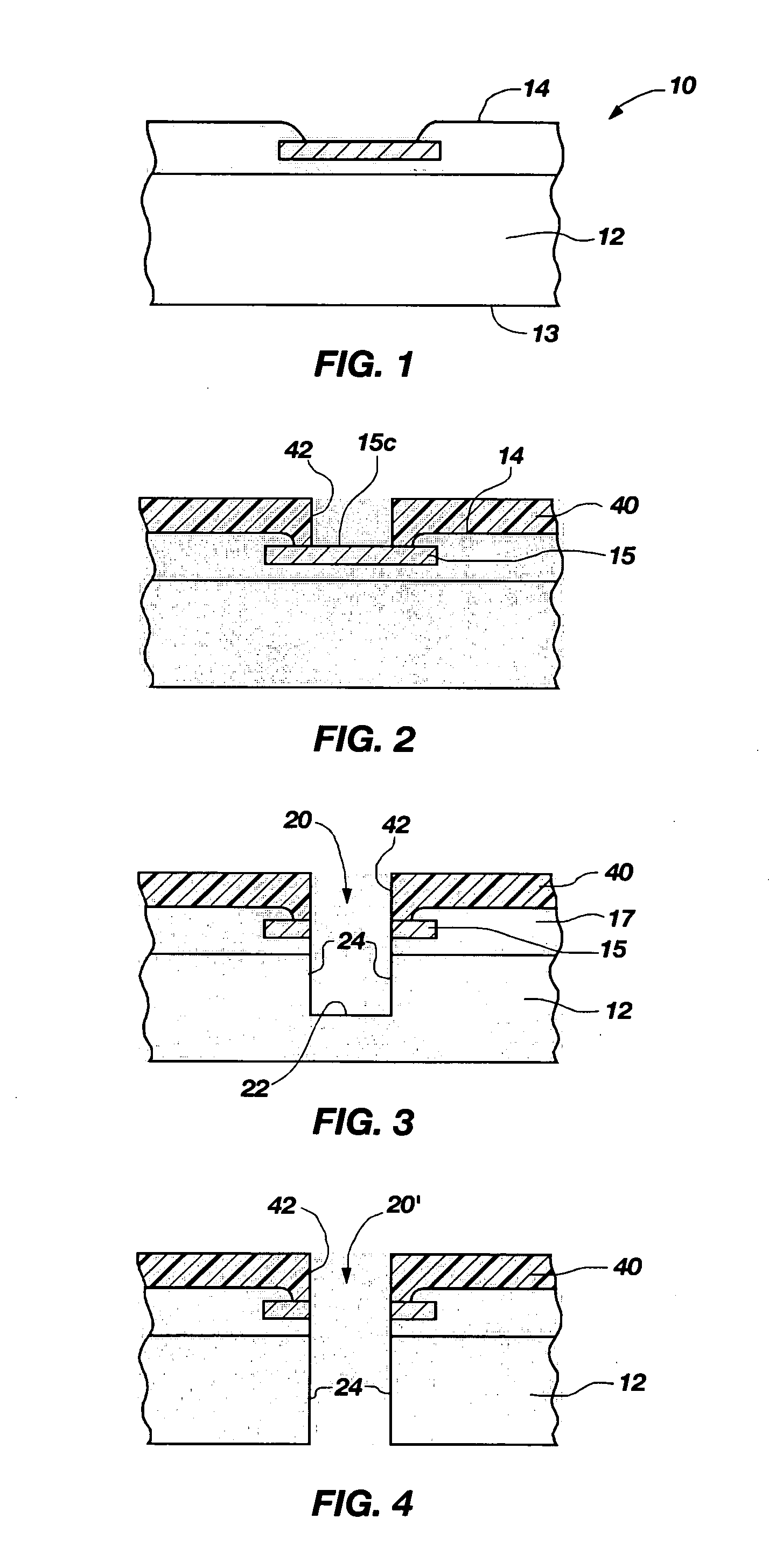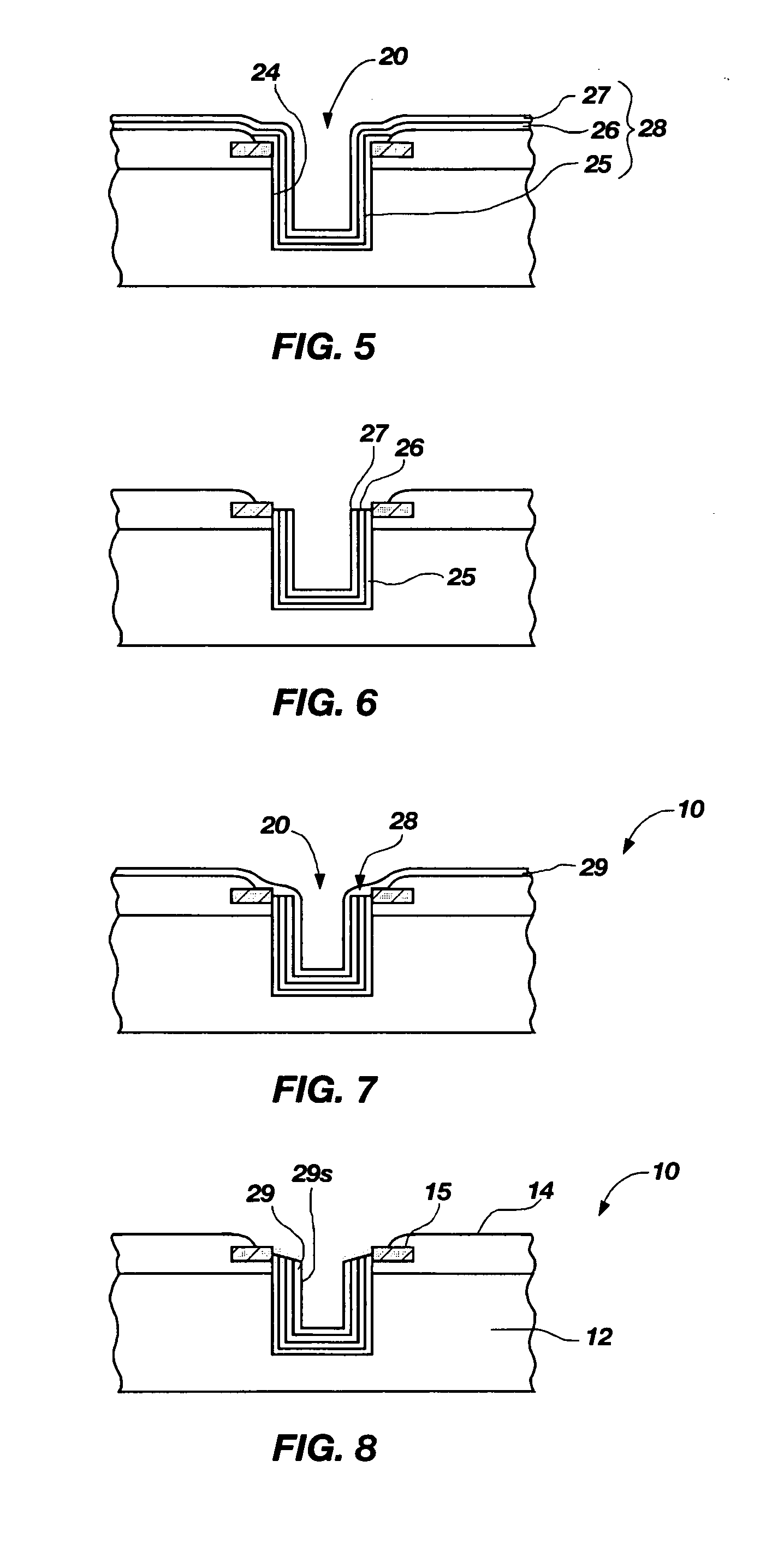Methods for fabricating and filling conductive vias and conductive vias so formed
a technology of conductive vias and conductive materials, which is applied in the direction of semiconductor devices, semiconductor device details, electrical apparatus, etc., can solve the problems of complex processes, shortening between a conductive via and the substrate, and not adhering well to the materials (e.g., silicon) of many substrates, so as to reduce the potential for electrical shorting and facilitate selective growth of conductive materials
- Summary
- Abstract
- Description
- Claims
- Application Information
AI Technical Summary
Benefits of technology
Problems solved by technology
Method used
Image
Examples
example 1
[0086] With reference to FIGS. 21 through 27, an example of a process that may be used to form via holes 20 in a substrate 12 and insulate, or passivate, surfaces 24 thereof is described.
[0087] In FIG. 21, a via hole 20 is formed in substrate 12. While via hole 20 is depicted as extending only partially through substrate 12 and is, thus, known in the art as a “blind via hole,” via hole 20 may alternatively extend completely through substrate 12. Via hole 20 may be formed by any suitable process, including, without limitation, by use of a mask through which one or more etchants selectively remove material of substrate 12, by laser ablation techniques, or otherwise, as known in the art.
[0088] While FIGS. 21 through 27 depict the process of EXAMPLE 1 as being useful for forming conductive vias that extend through “blind” areas of substrate 12, which do not include integrated circuitry or bond pads, these processes may also be used to form conductive vias that extend through bond pads...
example 2
[0097]FIGS. 28 through 35 illustrate another example of a process that may be used to form via holes 20 in a substrate 12 and insulate, or passivate, surfaces 24 of via holes 20.
[0098] In FIG. 28, a via hole 20 is formed in substrate 12.
[0099] As shown in FIG. 29, a first adhesion layer 25 is formed on surface 24 of via hole 20 and on an active surface. 14 of substrate 12. Portions of first adhesion layer 25 that overlie active surface 14 of substrate 12 are then immediately removed, as shown in FIG. 30.
[0100] Next, as illustrated in FIG. 31, a layer 26 comprising low-K dielectric material is deposited over remaining portions of first adhesion layer 25 and over active surface 14. Thereafter, portions of dielectric layer 26 that overlie active surface 14 are removed, as depicted in FIG. 32.
[0101] A second adhesion layer 27 is then formed, as shown in FIG. 33. Portions of second adhesion layer 27 that overlie active surface 14 are subsequently removed, while portions of second adh...
example 3
[0104] In another exemplary via hole formation and insulation technique, which builds upon the process flow described in EXAMPLES 1 and 2, the first adhesion layer may be omitted and replaced with a process for roughening surface 24 of via hole 20, as shown in FIG. 36. Surface 24 may be roughened, for example, by the process or processes that are used to form via hole 20. Alternatively, a separate etch process may be used to increase the roughness of surface 24. The roughness of surface 24 enhances the direct adhesion of dielectric layer 26 or dielectric coating 28 to the material of substrate 12 at surface 24, as shown in FIG. 37.
PUM
| Property | Measurement | Unit |
|---|---|---|
| aspect ratios | aaaaa | aaaaa |
| dielectric constant | aaaaa | aaaaa |
| aspect ratio | aaaaa | aaaaa |
Abstract
Description
Claims
Application Information
 Login to View More
Login to View More - R&D
- Intellectual Property
- Life Sciences
- Materials
- Tech Scout
- Unparalleled Data Quality
- Higher Quality Content
- 60% Fewer Hallucinations
Browse by: Latest US Patents, China's latest patents, Technical Efficacy Thesaurus, Application Domain, Technology Topic, Popular Technical Reports.
© 2025 PatSnap. All rights reserved.Legal|Privacy policy|Modern Slavery Act Transparency Statement|Sitemap|About US| Contact US: help@patsnap.com



